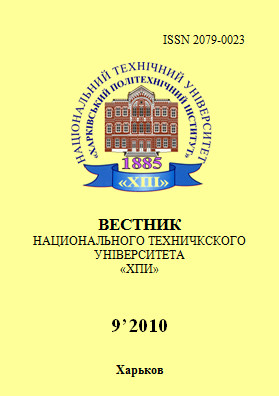Решение задачи выбора сценария развития для атомной электростанции
DOI:
https://doi.org/10.20998/%25xAbstract
В статье рассматриваются вопросы планирования и выбора сценария развития атомной электростанции. В качестве решения предлагается метод анализа иерархий. Построены иерархия прямого и обратного процесса планирования. В результате расчетов был выбран сценарий развития атомной станции.References
Т.Саати, К. Кернс. Аналитическое планирование. – М.: Радио и связь, 1991, 224с.
Абакаров А.Ш., Сушков В.А. Программная система поддержки принятия рационального решения. – Электронный научный журнал «ИССЛЕДОВАНИЕ В РОСИИИ», №1, 2005 г.
Ногин В.Д. Принятие решения в многокритериальной среде: количественный подход. – М.: Физматлит, 2002, 176с.
Downloads
Published
2009-12-25
How to Cite
Кривенко, Н. В. (2009). Решение задачи выбора сценария развития для атомной электростанции. Bulletin of National Technical University "KhPI". Series: System Analysis, Control and Information Technologies, (9), 73–80. https://doi.org/10.20998/%x
Issue
Section
SYSTEM ANALYSIS AND DECISION-MAKING THEORY
License
Copyright (c) 2015 Вестник Национального технического университета "ХПИ". Серия: Системный анализ, управление и информационные технологииAuthors who publish with this journal agree to the following terms:
- Authors retain copyright and grant the journal right of first publication with the work simultaneously licensed under a Creative Commons Attribution License that allows others to share the work with an acknowledgement of the work's authorship and initial publication in this journal.
- Authors are able to enter into separate, additional contractual arrangements for the non-exclusive distribution of the journal's published version of the work (e.g., post it to an institutional repository or publish it in a book), with an acknowledgement of its initial publication in this journal.
- Authors are permitted and encouraged to post their work online (e.g., in institutional repositories or on their website) prior to and during the submission process, as it can lead to productive exchanges, as well as earlier and greater citation of published work (See The Effect of Open Access).


